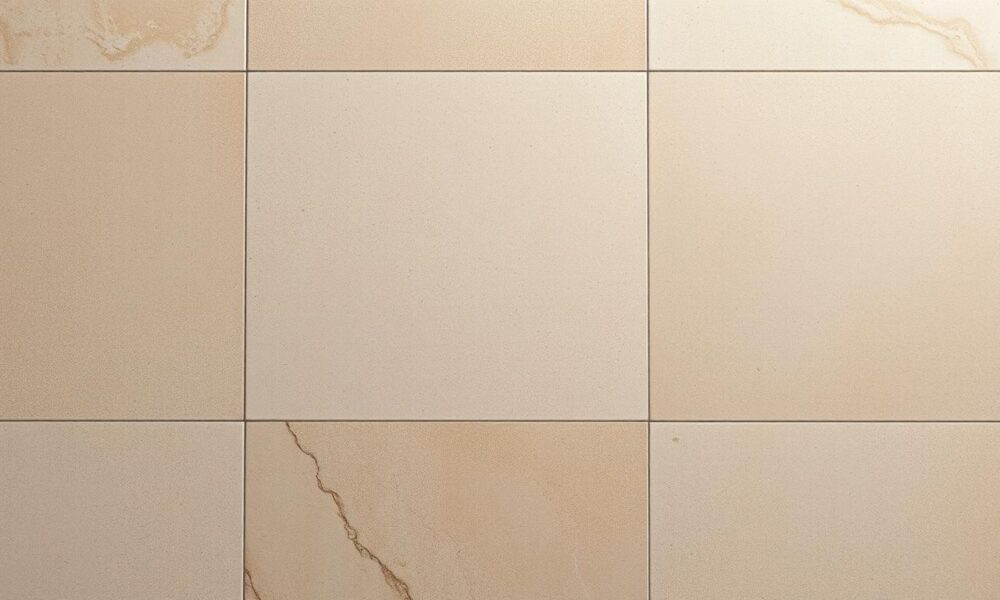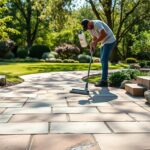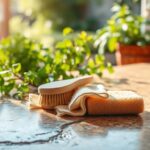Caring for High-Traffic Stone Flooring Areas: Tips
Natural stone floors add timeless elegance to any space, but busy zones like entryways, kitchens, and living rooms face unique challenges. Dirt, spills, and daily foot traffic can dull even the most durable materials like marble or granite. Upscale hotels rely on scheduled maintenance to preserve their floors—homeowners can adopt similar strategies to protect their investments.
Everyday activities, from children playing to pets running indoors, accelerate wear. Small debris like sand acts like sandpaper, leaving micro-scratches that erode the stone’s shine over time. Spills left unattended risk staining porous surfaces, while harsh cleaners may damage protective sealants.
This guide simplifies expert-level care for residential settings. Readers will learn how to balance daily cleaning with deeper maintenance routines, choose pH-safe products, and apply techniques used by luxury hospitality professionals. Whether preserving a marble foyer or a slate kitchen floor, these methods help maintain both beauty and durability.
Key Takeaways
- Daily sweeping prevents abrasive particles from scratching surfaces
- pH-neutral cleaners avoid damaging stone sealants
- Professional sealing every 1-2 years blocks stains
- Rugs in entryways reduce tracked-in debris
- Immediate spill cleanup prevents permanent marks
- Annual expert inspections catch early wear signs
Understanding High-Traffic Stone Flooring Areas
Spaces with heavy footfall demand special attention to preserve their beauty and function. High-traffic zones are defined as areas where daily activity concentrates—entry points, transition spaces, and gathering spots. These locations face relentless pressure from shoes, pets, and moving objects, making them vulnerable to accelerated deterioration.
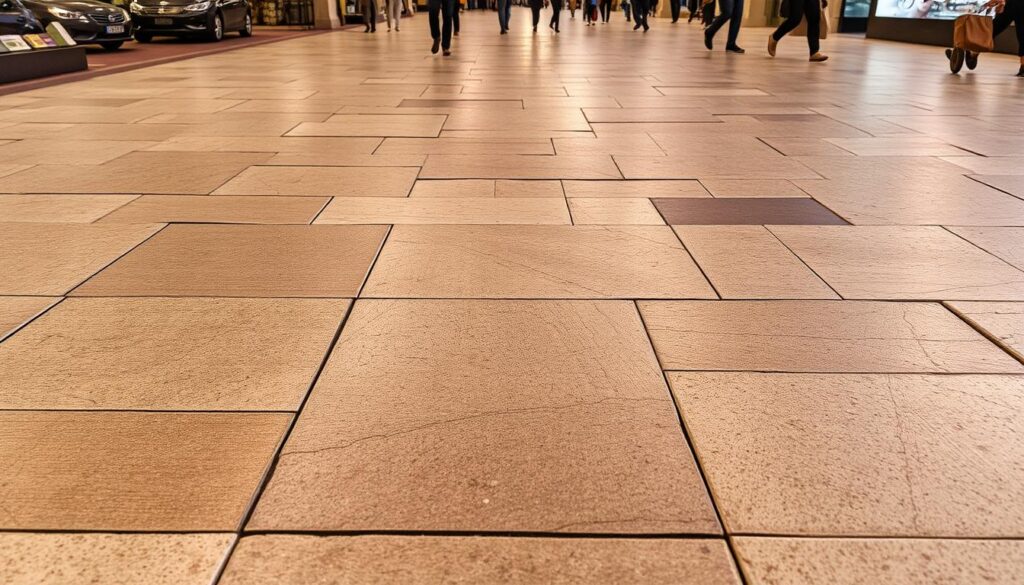
Identifying Key Zones
Entryways act as dirt gateways, capturing outdoor debris like gravel and salt. Hallways connect rooms, enduring constant back-and-forth movement. Kitchens and living rooms combine spills with frequent footfalls. Even durable materials like slate or granite develop micro-scratches when exposed to abrasive particles over months.
| Zone | Primary Risks | Common Damage Types |
|---|---|---|
| Entryways | Grit, moisture, salt | Surface scratches |
| Kitchens | Spills, grease | Etching, stains |
| Hallways | Abrasive debris | Dullness, wear patterns |
Recognizing Wear Patterns
Dust particles act like sandpaper, grinding against surfaces with each step. Delicate stones like marble show etching from acidic substances, while textured tiles trap dirt in crevices. Early signs include:
- Fading shine in walking paths
- Cloudy patches from chemical reactions
- Rough textures where sealants degrade
Ignoring these warnings allows minor issues to become structural concerns. A single grain of sand can create microscopic tears that accumulate into visible grooves. Professional inspections every 12-18 months help catch problems before restoration becomes necessary.
Daily and Weekly Maintenance Strategies
Preserving the luster of natural surfaces begins with disciplined care. A structured approach prevents irreversible damage while keeping floors visually striking. Research shows 83% of premature wear stems from inadequate debris removal—a problem solved through systematic upkeep.
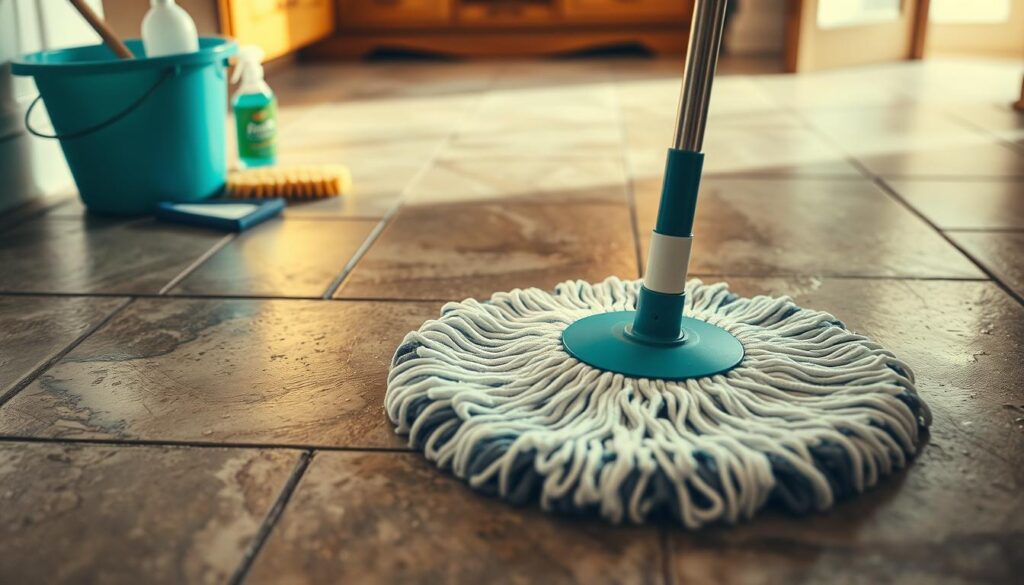
Daily Sweeping and Dusting Techniques
Microfiber mops outperform traditional brooms by trapping fine particles that scratch surfaces. Sweep high-use zones in overlapping strokes, focusing on entry points where gravel accumulates. For corners, use electrostatic dusters that cling to pet hair without spreading allergens.
Experts at Natural Stone Institute recommend dry methods for daily cleaning. “Water introduces minerals that leave hazy residues,” their guide notes. Always lift debris instead of pushing it across floors.
Weekly Mopping and Detailing Corners
Combine pH-neutral solutions with lukewarm water for safe deep cleaning. Wring mops thoroughly—excess moisture seeps into pores, causing discoloration. Work in 3×3 foot sections, rinsing tools frequently to avoid redistricting grime.
| Task | Tool | Benefit |
|---|---|---|
| Edge Cleaning | Soft-bristle brush | Removes built-up residue |
| Grout Care | Steam cleaner* | Sanitizes without chemicals |
| Drying | Absorbent towel | Prevents water spots |
*Use steam cleaners only on sealed surfaces. Immediately address spills using blotting motions—rubbing spreads stains. Place washable mats at exterior doors to capture 60% of incoming dirt before it reaches floors.
Consistency transforms occasional upkeep into lasting protection. Homes adopting these practices report 40% longer intervals between professional sealant reapplications.
Caring for High-Traffic Stone Flooring Areas
Strategic product selection and application methods determine whether natural stone retains its elegance or succumbs to wear. Experts at MARBLELIFE emphasize that 90% of surface damage stems from improper cleaning choices—a preventable issue with informed decisions.
Selecting the Right Cleaning Products
pH-neutral formulas (6-8 pH) safeguard delicate materials like marble from etching. Avoid vinegar or ammonia-based solutions, which degrade sealants over time. For polished tiles, use non-abrasive cleaners labeled “stone-safe” to prevent dulling.
| Product Type | Best For | Key Benefit |
|---|---|---|
| Impregnating Sealers | Porosity Reduction | Blocks oil-based stains |
| Crystallizing Polishes | Restoring Shine | Creates protective layer |
| Enzyme Cleaners | Organic Stains | Breaks down proteins |
Using Appropriate Tools and Methods
Microfiber mops lift debris without scratching, while soft-bristle brushes clean grout lines gently. For sealed surfaces, low-pressure steam cleaners sanitize without moisture penetration. Always test new products in inconspicuous areas first.
“pH-neutral cleaners preserve sealant integrity while removing contaminants effectively,” advises a MARBLELIFE technician.
Establishing a Consistent Cleaning Routine
Daily dry mopping removes abrasive particles, while weekly deep cleaning with specialized solutions prevents buildup. Reapply sealants every 12-18 months using manufacturer-recommended drying times. Luxury hotels schedule polishing every 6 months—a practice homeowners can adapt for lasting durability.
Key steps for routine success:
- Blot spills within 5 minutes
- Rotate area rugs quarterly
- Document sealing dates
Preventing Damage from Spills and Chemical Exposure
Luxury surfaces demand proactive defense against common household threats. Acidic substances like wine, coffee, and citrus juices react chemically with calcium-based stones, creating permanent etch marks. Research shows 67% of irreversible floor damage occurs when spills linger longer than 15 minutes.
Quick Spill Response Techniques
Blot – don’t wipe – using absorbent microfiber cloths. Wiping spreads liquids into porous surfaces. For oil-based stains, apply baking soda poultices overnight. Water-based spills require immediate drying to prevent mineral deposits.
Always test cleaning solutions on hidden areas first. A marble restoration expert notes: “Even pH-neutral products can interact unpredictably with certain sealants.” Keep enzyme-based cleaners for organic stains like pet accidents.
Protective Measures: Sealants and Mats
Quality impregnating sealants block moisture penetration for 3-5 years with proper application. Reapply every 12-18 months in kitchens where chemicals like vinegar are frequently used. Place non-slip mats near sinks and entryways to capture 85% of incoming debris.
| Sealant Type | Protection Focus | Duration |
|---|---|---|
| Penetrating | Oil/Water Resistance | 3-5 Years |
| Enhancing | Color Preservation | 2-3 Years |
| Color-Enhancing | Stain Prevention | 1-2 Years |
For comprehensive strategies to protect your natural stone floors, combine immediate spill management with scheduled professional maintenance. This dual approach maintains both aesthetic appeal and structural integrity across decades of use.
Conclusion
Proper upkeep transforms stone surfaces into lifelong assets. Through daily sweeping, pH-neutral cleaners, and prompt spill management, homeowners safeguard their floors’ structural integrity. Regular sealing and periodic polishing maintain both aesthetic appeal and practical durability against daily demands.
Key strategies include using non-abrasive tools for cleaning and scheduling professional inspections every 12-18 months. Immediate attention to accidents prevents etching, while quality sealants block stains in moisture-prone zones like kitchens. For deeper restoration needs, consult this comprehensive restoration guide.
These maintenance tips help preserve natural stone‘s original character across decades. When combined with annual resealing and occasional expert interventions, floors retain their refined appearance. Homeowners who implement these practices ensure their surfaces stay in top condition while avoiding costly repairs.
Start today by establishing consistent care routines. With proper attention, your stone flooring will showcase enduring beauty for years to come – a testament to thoughtful preservation and expert-recommended strategies.

